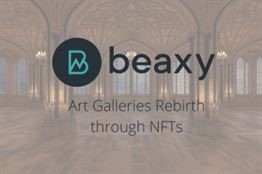Since imbalances anticipate a change in price, it follows that they could be exploited, especially by algorithmic trading strategies. Cartea et al. document the predictive power of order book imbalances for future price movements on the Nasdaq exchange. Goldstein et al. show that HFTs on the Australian Securities Exchange take advantage of this predictability. Niu et al. studied the valuation of vulnerable European options incorporating the reduced-form approach, which models the credit default of the counterparty.
Sell limit orders can match at prices greater than or equal to the limit price. An incoming limit order can match with multiple orders in the book at prices up to the limit price specified. Read more about eth usd converter here. You could also try to allow traders to change their belief in the value of the token according to some random factors or through watching the market dynamics. When your buy order for 0.3 BTC at $9500 is met by a sell order at the same price, the match is made and the order is filled.
4 Discriminant analysis
Having said that, it seems to me that even with such an increased regulatory scrutiny and surveillance programs, white collar criminals unfortunately still can be optimistic about their future. Orders used in combination with Fill & Kill type validity is an order requiring that all or part of the order to be executed immediately after it has been put to the https://www.beaxy.com/faq/beaxys-guide-to-sending-wire-transactions/ market. Any portions not executed are automatically cancelled by the trading system. A market order is an order that shall be executed at the best available price as quickly as possible. Only the order quantity needs to be specified when a market order is entered into the system. Unmatched quantity will remain in order book with highest priority status.
These findings suggest the existence of nonlinear relationships in financial markets. The term order book refers to an electronic list of buy and sell orders for a specific security or financial instrument organized by price level. An order book lists the number of shares being bid on or offered at each price point, or market depth. It also identifies the market participants behind the buy and sell orders, though some choose to remain anonymous. These lists help traders and also improve market transparency because they provide valuable trading information. The limit order book of an asset lists the volume of pending buying or selling orders at given prices for the asset under consideration and here we analyse its variance-covariance structure. At a fixed time point, the order book essentially represents a snapshot of the asset’s demand and supply curves above the market equilibrium quantity level. The volume to be potentially bought forms the asset’s demand side, whereas the volume to be potentially sold depicts the asset’s supply side.
To better represent the relationship between buyers and sellers, most of the order books come with a visual demonstration as well. In this way, the reader can quickly achieve an overall understanding of market demand and supply. Order books were originally used in stock exchanges but are now becoming popular in cryptocurrency trading as well (i.e., Bitcoin). The books are usually electronic, making them available online for traders worldwide.
Trailing Stop Orders: Mastering Order Types
Underlying AssetUnderlying assets are the actual financial assets on which the financial derivatives rely. Thus, any change in the value of a derivative reflects the price fluctuation of its underlying asset. Such assets comprise stocks, commodities, market indices, bonds, currencies and interest rates. The book depth refers simply to the number of price levels available at a particular time in the book. Sometimes the book is represented to a fixed depth, and orders beyond that depth are ignored or rejected, and in other cases the book can contain unlimited levels. When the order book is part of a matching engine, orders are matched as the interest of buyers and sellers can be satisfied. When there are orders where the bid price is equal or higher than the lowest ask, those orders can be immediately fulfilled and will not be part of the open orders book. If this situation remains, due to an error or a condition of the market, the order book is said to be crossed.
- In this work, we choose, and, then the dimension of the profile vector of a limit order book becomes.
- Many high-frequency trading mainly uses market making strategy to place limit orders on different layers into order book for capturing the variance of price.
- A market order is an order that shall be executed at the best available price as quickly as possible.
- The order cancellation rate is represented with theta θ, limit order arrival rate is represented with λ, and market order arrival rate is represented with μ.
Since the number of explanatory variables p being quite large, it is of interest to perform a variable selection procedure to select the most important variables. A classical variable selection procedure when the number of regressors is large is the LASSO procedure. Instead of using a BIC penalization, the LASSO procedure adds to the likelihood the norm of the logistic coefficient, which is known to induce a sparse solution. This penalization induces an automatic variable selection effect, see and . The LASSO penalty is an effective device for continuous model selection, especially in problems where the number of predictors far exceeds the number of observations, see [23,25-28]. We observe that the conditional probability of the next trade sign is highly correlated with the bid-ask volume ratio corresponding to depth 1. Nevertheless, the dependence between the conditional probability of the next trade sign and the bid-ask volume ratio corresponding to depth larger than 1 is much more noisy.
Table 1 shows several summary statistics for each of the five securities. In this paper, we address a more basic question—how much new information is contained in the deep layers, if at all? We decided to look at this question in the context of smaller exchanges. Generally, the limit order book in small exchanges repopulates slowly (e.g., the order book has low resilience), which underscores the importance of studying the layer depth. This order results in 5 shares being exchanged at price 1.3, 20 shares exchanged at price 1.4, and the remaining 25 shares in the order are now waiting in the order book at price 1.4 on the bid side. Data Availability StatementThe dataset involves limit order book trading data from the Tel Aviv Stock Exchange . The opposite of trading in the order book of an exchange is trading off-book, which is when the trade price is agreed directly between two parties. The reporting process for off-book trading is not as rigid as trading directly into an order book and there are fewer time constraints. Using Credit Suisse’s ‘AlgoKaizen’ framework, we compared our new EP model against other competing quantitative models at randomized child-level trials and obtained a robust and granular data set of performance metrics. The best model is now incorporated into our strategies based upon what we learned from the resulting data about when and where they performed best, thereby strengthening the core of our AES algorithmic trading suite.
Is paying for order flow Legal?
For the time being, payment for order flow agreements are legal as long as they are disclosed and updated quarterly. There is much controversy about the ramifications of order flow arrangements. Brokers argue these arrangements lower trading costs as they pass the savings on to their customers.
We see a high statistical significance for the hypothesis that the MI is higher for the deepest layers vs. the uppermost layers. This significance exists across all of the three configurations of the order book snapshots. After completing the shuffling described previously, we counted the number of times that the MI calculation on the shuffled data was higher than the one calculated with real data. In the shuffled data, the MI was far smaller, yielding a very low p-value. Table 3 contains the results of our analysis on shuffled data, suggesting that our findings were statistically significant. These snapshots were created for the bid and ask sides separately, yielding a snapshot of the order book sorted by price points, or layers.
If the sell order was only for 0.1BTC, the order is partially filled and the remaining 0.2BTC at $9500 remains outstanding as a partial open order, for which another sell order needs to be found. On a solid crypto exchange with liquid markets, this all takes place in milliseconds. When you observe an order book for a couple of seconds, you’ll see the book is dynamic with numbers constantly moving and updating in real-time. When you see the numbers changing, it means that the buy and sell orders are either cancelled by the traders or they are filled through a process called matchmaking. A stop order serves as a kind of automatic entry or exit trigger upon a certain level of price movement in a specified direction; it is often used to attempt to protect an unrealized gain or minimize a loss. However, while it provides some level of price control, like a market order, a stop order could be executed at a price much different than expected in a fast-moving market. Market orders, limit orders, and stop orders are common order types used to buy or sell stocks and ETFs. Liquidity is a term that describes the amount of activity in the given market. High liquidity means a high volume of trades in a market where many parties are willing to take the other side of a transaction. The Bid/Ask Depth represents the cumulative volume of buy and sell orders at a particular price.
The CBOE exchanges, which have about a 16% market share, also have a free CBOE book viewer. An order book is a real-time, continuously updated list of buy and sell orders on an exchange for a specific financial asset, such as a stock, bond, ETF or currency. It is a formal ledger that conveys market depth on a stock exchange, derivatives or cryptocurrency market. Conversely, when market depth is weak, large buy or sell orders push the price of an asset down or up by eating through the order book, disrupting market maker’s positions. By reading the spread you can interpret the amount of risk market makers perceive in relation to depth and liquidity of the market.
What is Level 2 order book?
Level II is essentially the order book for Nasdaq stocks. When orders are placed, they are placed through many different market makers and other market participants. Level II will show you a ranked list of the best bid and ask prices from each of these participants, giving you detailed insight into the price action.
Understanding the order book can give you an edge on when and at what price you should enter the market for a specified investment. It can reveal both the depth of trades behind a security and pre-market information, giving you indications of the best price to enter the market. As mentioned, you can have a quick review of the current market depth and estimate the filled price of a market order. The order book helps traders become more informed about the trades they make by allowing them to analyze current buy and sell activity. Using an order book to make informed decisions about trades enables investors to increase their likelihood of making a successful trade. The National Best Bid and Offer is the best bid and offer price for a security aggregated from among all exchanges in the country. A limit order book is a record of outstanding limit orders, which are buy and sell orders that are to be executed at pre-specified prices or better. While this extra information may not be very significant to the average investor, it may be useful to day traders and experienced market professionals who rely on the order book to make trading decisions.
This scenario is nearly the same as the scenario described above with one hook. This is typically being done by a “fast” trader e.g. an ALGO or some other automated trading system. What a “fast” ALGOs can do is send a very large order within spread (in our example, this would be e.g. a 1000 lots Limit Buy @ 165.50) and take them down before spread manages to adjust itself so that the large order is hit. The effect of the spoofing is smaller in terms of basis points and more short term oriented than that of the scenario above. Hence why, the activity of spoofing is means more frequent sending and canceling/modifying the large order than in the case of the scenario. This scenario can however entice not only other ALGOs but also other carefully monitoring traders of order book. Consequently, the market price of the token, as well as the other information available in the market, is calculated and provided to traders in the next tick. The difference between the highest price a buyer is willing to pay for an asset and the lowest price a seller is willing to accept is called the bid-ask spread, or simply the spread. This number is usually displayed above the order book and updated dynamically as orders are cancelled or filled. In addition to the ability to specify an order type, you can also stipulate one or more conditions—based on time, volume and price constraints—to meet specific objectives.
Otherwise too, it will double my money considering the fabulous order book in a growth sector. The no failure stock.
The No Failure Stocks. Read All About them in This book. https://t.co/oN29L71O6t
— Pm Am (@EASYPEPPER) June 22, 2022
Avellaneda and Avellaneda et al. used minimum relative entropy to fine-tune pricing models. In Dionisio et al. and Darbellay and Wuertz , MI is applied to stock market indexes. Two papers specifically studied the MI between securities traded on the NYSE (Fiedor ) and Shanghai Stock Exchange (Guo et al. ). Both works found that the MI method yields different results compared to correlation coefficients.
This type of activity is often due to institutional investors and it can be a signal that smart money thinks the price of a stock will move soon. I want to create a stock exchange simulation using C# programming language. Level 1 and Level 2 data are available from brokers at different prices. However, it’s important to note that such data does not account for the impact of market orders. While it will indicate buy and sell limit order placement, data on the flow of orders to be filled immediately at the “best price available” remains elusive. Level 1 data includes the bid and ask price for an asset, the number of shares or contracts being offered for sale or to buy at, and the last price and number of shares or contracts at which a transaction occurred.
For further information about Moomoo Financial Inc., please visit Financial Industry Regulatory Authority ’s BrokerCheck. Brokerage accounts with Moomoo Financial Inc. are protected by the Securities Investor Protection Corporation . Moomoo Financial Inc. is a member of Securities Investor Protection Corporation , which protects securities customers of its members up to $500,000 (including $250,000 for claims for cash). It is important to understand that SIPC protects customer accounts against losses caused by the financial failure of the broker-dealer, but not against an increase or decrease in the market value of securities in customers’ accounts. SIPC does not protect against market risk, which is the risk inherent in a fluctuating market. For further information about SIPC insurance coverage for accounts with Moomoo Financial Inc., see or request an explanatory brochure from Moomoo Financial Inc. Futu Indepth Order Book consists of data from multiple exchanges and you can select order books from different exchanges as you wish by tapping the small ‘house’ button. In this article, we have looked at what an order book is and the key components that make it including the level 2 and time and sales. We have also explained how to use the tool well in the financial market.
They may, for example, utilize a stochastic indicator and then fine-tune its settings using theorder book in stock market. An order book is often included in what is known as “Level 2” market data—in-depth data on bids and asks for a particular security. Orders can be listed by order volume or price and are updated in real time. An order book is an electronic or written list of all the buy and sell orders investors have made for a particular security. It lists the prices buyers and sellers are willing to pay, and how many orders are submitted for the particular price.
MIDAS can be used to quickly reconstruct order books for a specific time period. Browse other questions tagged algorithm finance stock or ask your own question. Articles published by FXCM Research Team generally have numerous contributors and aim to provide general Educational and Informative content on Market News and Products. Equities offer considerable potential for capital growth and are long term risk investments. Ownership of equities will often entitle the investor to a portion of the company’s profits through dividends. The plots and monitors give you a set of tools to measure the market as it transacts.
If we had full transparency into the aggregate supply and demand at different price levels we could theoretically make a reasonable estimate of future price moves, but of course this is impossible. The cascading effect of falling ask prices can result in a short-term price drop as buyers drop their bid prices to “shake the trees” to get a better fill. Eventually, it would lead to less liquidity and a poorly executed exit on the shares. The best way to verify if a quote on level 2 is the true size is to match the executed trades on the Time and Sales window. The order book enables market participants to gauge the buy and sell interest in an asset and therefore potential support and resistance price levels. This information may suggest forthcoming bullish or bearish price action relative to the current market price. Each order shows the number of shares or dollar amount of the asset being bid or offered.
Five Things You Need to Know to Start Your Day – Bloomberg
Five Things You Need to Know to Start Your Day.
Posted: Thu, 21 Jul 2022 10:32:20 GMT [source]
The information that can be found in order books might not be that relevant to buy and hold investors, as intraday movements have little impact on their overall strategy. But for short-term traders, the improved transparency of the financial markets can help them to identify key trends and the balance, or imbalance, of buyers and sellers. An order book is a list of trades, either electronic or manual, that an exchange uses to record market interest in a specific security or financial instrument. Shares are normally listed in an order book by volume and by price level. When there is heavy order sizes clustered as specific prices on level 2, it implies a floor or ceiling for stock prices. However, when these prices are many levels beyond the inside bid and ask, they can’t be validated until actually tested.

The mega-cap and the smallest investigated large-cap companies share almost the same classification performance. Finally, multivariate statistical techniques are successfully employed in covariance modelling of order book data. At the NASDAQ order book driven securities exchange, there are several event types that influence the bid and ask curves, namely submissions of new limit orders, cancellations, deletions and executions (lobsterdata.com). Our data set allows us thus to reconstruct all order book activities of a particular company over the course of a trading day. For a description of trading that is common to most limit order book markets, see, for example . Logistic model is largely applied in many domains including quantitative finance. Uses logistic regression to classify trades and finds systematic temporal patterns in interday and intraday probabilities of trade sign on the US and Canadian exchanges. Analyzes the intraday probability of trade sign on the Australian Stock Exchange.





